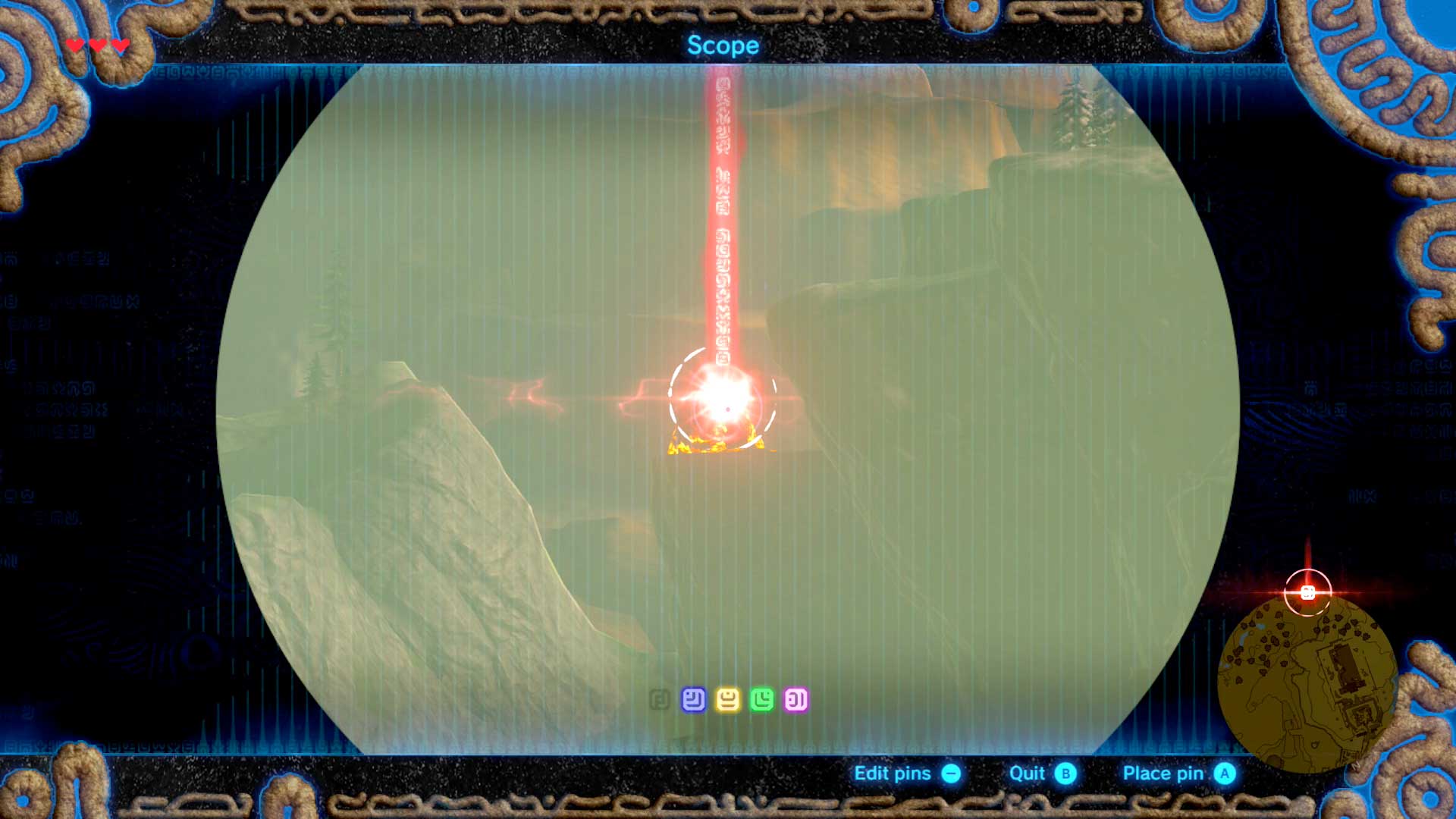The Legend of Zelda: Breath of the Wild is a game that breaks a lot of the traditions of 3D Zelda games in favor of a more open-ended experience where exploration is the focus. Mechanically, players are usually extrinsically rewarded for exploration with korok seeds that can expand Link’s inventory and spirit orbs that can be exchanged for heart containers or stamina vessels. Spirit orbs are found in shrines which are often visible from far away in the world. In contrast, korok seeds can’t generally be found by a player who isn’t right on top of them. A typical exploration sequence sees a player using the game’s climbing mechanic to ascend a mountain, cliff, or tower to find a vantage point from which they can spot faraway shrines or objects of interest. The player can then place a pin (a visible column of color) onto places they wish to visit.

A player finds a shrine by its orange glow and places a pin onto it from a zoomed-in view. The pin is visible in the minimap.
Once the pin has been placed, the player will have to navigate over to it. They can take out their scope at any point to see the column of light again, which can help the player locate the pin if the player’s line of sight to the target is obstructed. The minimap also helps guide the player in a particular direction toward the pin.
At this point, a player would likely travel on foot to the shrine, using the scope and the minimap as guidance. This could take a significant amount of time as the game’s version of Hyrule is quite large, so the player is quite likely to encounter objects of interest (such as hidden koroks) along the way. Perhaps the player will see another shrine and place a pin on that one as well. This exploration feedback loop dynamic, created by Breath of the Wild‘s world design, its climbing system, and its pin system, manages to draw the player into the world and allow them to engage with it without violating the game’s core principle of player choice — the player is never forced to do any of this, so nothing about it feels scripted or inflexible.
Breath of the Wild has drawn a lot of praise for the aesthetic elements of discovery and fantasy that manifest from this exploration feedback loop dynamic. This is my favorite aspect of the game, and I hope it remains intact in the upcoming sequel. If Nintendo focuses on refining the clunky food and armor systems in the first game, Breath of the Wild 2 has a good chance at replacing my current favorite game in the Zelda series, Majora’s Mask.


